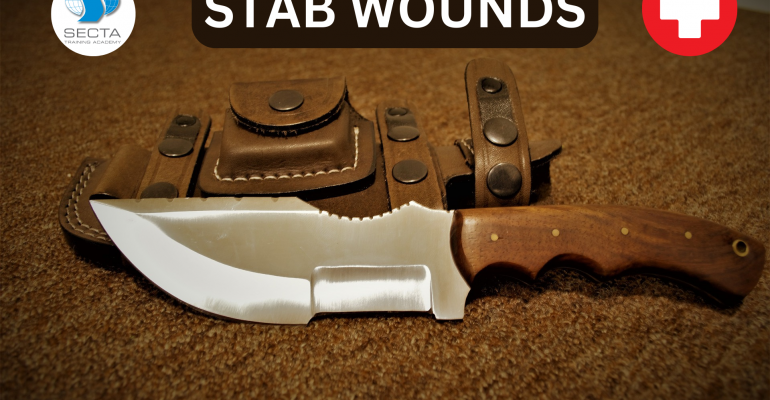STAB WOUNDS
21 July 2023 2023-07-21 0:35STAB WOUNDS
Knife crime is becoming increasingly prevalent, leading to more fatalities and injuries among young people than ever before. Ensuring the safety of children has become a pressing concern, and one practical solution is to introduce first aid training in schools. This is particularly important as schools have witnessed a rise in violent crimes in and around their premises.
Being equipped with first aid skills can make a significant difference in emergency situations, especially following a stabbing incident. Before commencing any first aid, it is crucial to ensure the area is safe and free from danger. Wearing gloves can offer protection, and assessing the casualty’s response or consciousness should be done swiftly.
For unconscious and breathing individuals, placing them in the recovery position and addressing obvious bleeding should be the immediate steps. In the case of unconsciousness and lack of breathing, addressing life-threatening bleeding takes priority over resuscitation. In instances where a catastrophic bleed cannot be stopped by direct pressure, calling for an ambulance and commencing CPR is essential.
Understanding how to stop bleeding is crucial, as it can be external (bleeding from an artery or vein) or internal (bleeding into a body cavity). Differentiating between major arterial and venous bleeds is important, as the former can be extremely serious and life-threatening.
Stab wounds, a form of sharp-force trauma, require proper management. Minor stab wounds may not bleed significantly but can carry the risk of infection and internal damage. In severe bleeding cases, controlling the bleed becomes a priority to prevent shock and loss of consciousness.
Providing first aid for stab wounds requires quick thinking and action. When faced with such a situation, surveying the area for safety, calling emergency services, and helping the victim lie down are initial steps. Checking for injuries, assessing the ABCs (Airway, Breathing, and Circulation), and not removing the stabbing object are vital actions in this scenario.
Applying pressure to the wound and covering the dressing can help control bleeding until medical help arrives. Continuously monitoring the victim’s condition, providing first aid, and looking out for symptoms of shock are essential while waiting for professional assistance.
Empowering individuals with basic life support skills and knowledge through first aid training is crucial in reducing fatalities from stab wound injuries. By teaching these skills, we can make a significant impact in saving lives during emergencies.
www.secta.com.au



